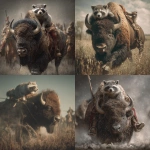Explore the Best AI Image Gallery

Harnessing AI-Generated Images in Marketing: Transforming the Creative Landscape
In the fast-paced world of marketing, visual content plays a crucial role in capturing consumer attention. With recent advancements in artificial intelligence, AI-generated images are becoming a transformative tool for marketers. These images, created using deep learning algorithms, not only enhance the visual appeal of campaigns but also streamline the production process. This blog post delves into the impact of AI images on the creative industry, explores various applications, discusses ethical considerations, and examines future trends in this exciting field.
The Impact of AI on the Creative Industry
AI-generated images have begun to significantly impact the creative industry by enabling faster and more efficient production. Gone are the days when brands relied solely on traditional photography or graphic design, which often required extensive planning, time, and resources. AI tools can generate high-quality images within minutes, allowing marketers to quickly pivot their strategies based on real-time data and trends.
Not only does this speed up the workflow, but it also reduces costs associated with hiring photographers, graphic designers, and models. By integrating AI-generated visuals into their marketing strategies, businesses can allocate resources more effectively, focusing their budgets on creative direction and campaign strategy rather than labor-intensive processes.
Potential Uses of AI-Generated Images
AI-generated images can be employed in various marketing contexts. Here are some notable applications:
- Social Media Content: AI tools create engaging visuals that can be quickly shared across social media platforms, enhancing brand presence and audience engagement.
- Website Optimization: Custom images tailored to target audience preferences can significantly boost user experience and conversion rates on e-commerce websites.
- Advertising Campaigns: Dynamic ad creatives generated through AI can adapt to user preferences and behaviors, improving click-through rates.
- Brand Illustrations: Companies can develop unique brand visuals that help establish identity and promote storytelling without the need for lengthy photo shoots.
Ethical Considerations
As with any technological advancement, the use of AI-generated images in marketing raises ethical concerns. The question of authenticity arises—how do consumers perceive images that are not created by human hands? While these images are visually appealing, they may lack the emotional connection that authentic photographs evoke.
Moreover, the potential for misuse, such as generating misleading or harmful imagery, poses risks. Brands must navigate these challenges carefully, ensuring that their use of AI aligns with ethical marketing standards. Transparency with audiences about the origin of the images and their intentions is crucial for maintaining trust.
Future Trends in AI-Generated Images
The future of AI-generated images in marketing is promising, with several trends likely to shape its evolution:
- Increased Customization: AI algorithms will continue to learn from user data, creating increasingly personalized visuals that resonate with specific target demographics.
- Integration with Augmented Reality (AR): Combining AI-generated visuals with AR technology could lead to immersive marketing experiences, bridging the gap between digital and real-world interactions.
- Collaborative AI Art Platforms: As AI tools become more accessible, we may see the rise of platforms where marketers and artists collaborate, using AI as a co-creator rather than a replacement.
- Advancements in Deep Learning: Continuous improvements in deep learning technologies will lead to more intricate and sophisticated AI-generated images that challenge our perception of art and design.
In conclusion, the integration of AI-generated images into marketing strategies presents both opportunities and challenges. By embracing this technology, brands can enhance their creative output, improve engagement, and reduce costs. However, it is essential to approach these advancements with an ethical mindset, fostering transparency and accountability. As we move forward, the synergy between AI and creativity will continue to redefine the landscape of marketing, offering exciting possibilities for brands willing to adapt.


](https://images.ai-img.art/thumbnails/150/2d4ea5195083ca7b2d3b582e81252dd22f60af65e47d2869b902779447aef5b6.webp)
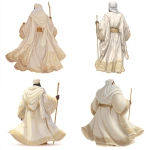


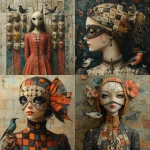





](https://images.ai-img.art/thumbnails/150/eef24b73be7aff90887fa84e17197f8779e355efee60a78764ddc04a3c05ead1.webp)


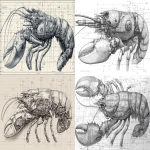














](https://images.ai-img.art/thumbnails/150/3214e988d4008f30c5a037acca1b4351055bd6ec65df0884fcdccd09d46c748c.webp)

](https://images.ai-img.art/thumbnails/150/e30ebd22be803c7de05fcb5dd6652965dec130df7d6574e7ca3a8591dbce8f2a.webp)

](https://images.ai-img.art/thumbnails/150/de2c068895a12730e04e9ae6ff88098cad56c69fe790f7696fde12227d56450b.webp)

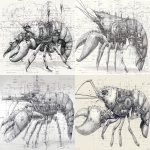
](https://images.ai-img.art/thumbnails/150/bce9cceb80b7d5238edfa28ed5e3a2be25fb5d8ca48c96f4d1a07205c5b15b4a.webp)



](https://images.ai-img.art/thumbnails/150/6b5ff04e6006f3b97dd36eaec548e34255713276a4bf8dc9fd72dc11b7313f39.webp)






](https://images.ai-img.art/thumbnails/150/005584f3955a233f0b74db7d02caa6d62f861640781eac80962d9b1631f410d0.webp)
